Interaction with electronic devices and systems has become more prevalent in our modern technological world, from circuit boards to hard drive components to advanced electronic hardware using metal-oxide-semiconductor (MOS) technology. Working with these devices means exposure to sensitive components such as resistors, capacitors, and LEDs. Several risks are associated with these components, including the danger of electrostatic discharge (ESD). ESD is a common concern and results from a sudden flow of electricity between two electrically charged objects due to a short circuit or a malfunction. The static electricity generated when this occurs is concerning, as it can potentially cause dangerous explosions, damaging equipment and endangering workers.Â
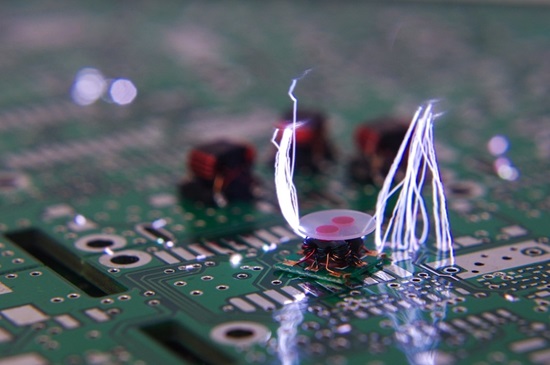
Electrostatic discharge (ESD) can cause dangerous sparks.Â
In the late 1970s, the electronics industry began noticing equipment failure that could be traced back to electrostatic discharge incidents. By the 1980s, engineers developed structures to withstand these ESD events. However, by the early 2000s, user demand for increased electronic performance and 5G high-speed internet caused rates of ESD events to jump once again. To address these issues, the ESD Association set global standards and best practices for static control to help mitigate the losses and hazards of these events. They are the only organization accredited by ANSI to create electrostatic standards, and they continue to develop ways to minimize or avoid ESD as technologies change.
Electrostatic discharge is dangerous and damaging and can pose life-threatening risks to workers. As NASA highlights, only 20 volts of ESD can severely damage expensive electronic equipment and potentially risk human life. Therefore, it is essential to implement correct ESD grounding techniques and proper ESD protection in all facilities where ESD may occur. This article will explore ESD, highlight the current standards, identify the protection required, ANSI-rated anti-static gloves, and name some of the industries most impacted. Let's charge ahead!
What Is Electrostatic Discharge?

Â
Electricity is all around us. Everything, including the human body, is made up of atoms that contain positive and negative charges. Opposite charges, like negative and positive, attract each other; like charges, such as negative and negative or positive and positive, repel each other. Most of the time, all is well, and there is a balance in the charges, rendering them neutral. However, sometimes an imbalance occurs when two different materials come in contact and are rubbed together. During this process of rubbing against each other, one of the materials becomes positively charged and the other negatively charged. The positively charged substance now has an electrostatic charge. That electrostatic charge builds up until it is released, resulting in an ESD event. Â
Â

Click the image above to see why NASA considers electrostatic discharge a serious matter.
Â
Examples of ESD include the shock we feel when walking on a carpet and touching a metal doorknob or the static electricity we experience after removing our clothes from a dryer. Lightning is a more extreme example of electrostatic discharge. Although most ESD events are not dangerous, they can be costly in industrial environments where expensive equipment is utilized. When a static charge discovers a path to ground from a sensitive component, the sudden current flow and energy can overload components on a device. The charge's intense temperature can melt or vaporize tiny components, causing the device to fail. And just because a device doesn't fail immediately, it can still be permanently damaged by latent failure, resulting in a potentially catastrophic failure on the front line of expensive production equipment. Estimates place ESD damage at the root of as much as one-third of product losses in an electronics manufacturing environment, particularly in the age of semiconductors.
Electrostatic Discharge Program
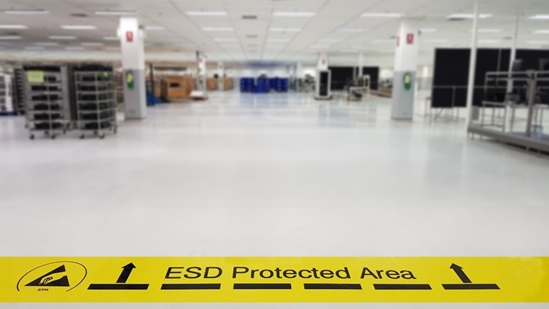
There is a golden rule in preventing electrostatic discharge: Avoid Charges! Since humans carry electric charges on their skin and clothes, proper electric control plans must be in place across common areas to allow for electric discharge. According to the ESD Association, a plan should incorporate the following:
1.   Protective Designs – determine the optimal protection deterrents for products and assemblies to counteract the effects of ESD.
2.   Defined Control Levels – based on specific needs in particular environments.
3.   Identify and Specify – define which areas are electrostatic-protected areas (EPAs), that is, where ESD-susceptible (ESDS) items should be handled.
4.   Decrease Electrostatic Charge Generation – remove all static-generating processes and offer appropriate ground paths to reduce potential discharge events.
5.   Neutralize Materials –ground dissipative static materials.
6.   Protect Products – harness static control in packaging and material-handling products.
Establishing an electric control plan is a company's most critical foundational step to ensure limited electrostatic discharge and to protect the integrity of products handled. These plans establish a designated environment with materials and equipment to limit electrostatic potentials. In addition, personnel must be schedule electrostatic discharge training and certified to work in these areas.
For more information about ESD control plans, visit these helpful websites:
- Saab Automobile ReportSample Control Document
- Technology Roadmap
Â
Industries and Activities Associated with ESD
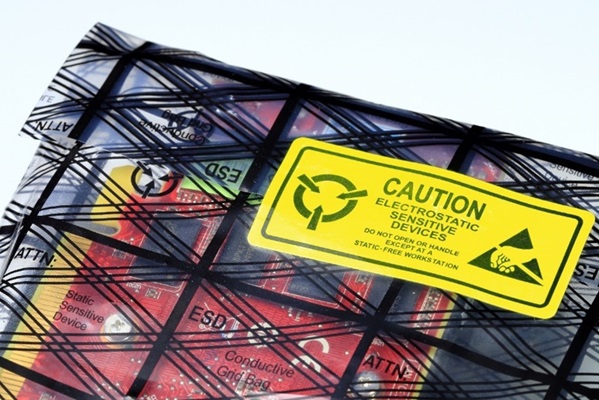
ANSIÂ explains that electrostatic discharge susceptible (ESDS) items are typically microcircuits, distinct semiconductors, film resistors, hybrid devices, printed circuit boards (PCBs), and piezoelectric crystals. The ESD Association reveals that these components are commonly found in the assembly, cleanrooms, inspection, receiving departments, R&D, repair centers, packaging, and field service areas of many facilities. Let's turn these areas into more specific settings many will recognize.
Here are a variety of situations where electrostatic discharge is a concern:
- Assembly operations in an aerospace manufacturing facility
- Automotive production and assembly of electronic systems
- Manufacturing fiber optics
- Mechanical and electrical repair of electronic equipment
- Paper manufacturing processes using rollers that generate electricity
- Painting operationsÂ
- PC assembly and construction, including circuit board handling
- Precision packaging and manufacturing of thin-film-transistor-based flat panel displays
- Sensitive assembly operations in a PCB factory
- Smartphone and electronic device fixes and upgrades
- Static-sensitive device handling in medical device manufacturing
- Setting up workplace servers
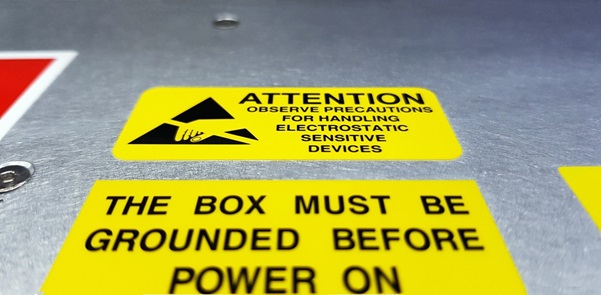
ESD Protection and Standards

Â
ANSI/ESD S20.20 is the overarching ANSI standard for all facets of an ESD control program. It covers the requirements to design, implement, and maintain an organization's ESD control plan. In addition, ANSI/ESD SP17.1 describes the techniques and tools used to handle ESD-susceptible (ESDS) items.
 Here is a list of the standard gear used around sensitive electronic equipment:
- Anti-Static Mat – helps prevent and shield equipment from electrostatic discharge. ANSI/ESD S4.1 is the test method used.
- ESD Floor Mat – transfers charges from a person to the flooring and is often made from carbon fibers. ANSI/ESD STM7.1 is the test method used. Â
- Footwear – is made of conductive materials to prevent one's feet from generating electricity. ANSI/ESD STM 9.1 is the testing standard used.
- Electrostatic Discharge Clothing – offer protection from the static electricity often generated by clothing.ANSI/ESD STM 2.1 is the test method used.
- Electrostatic Discharge Strap – connects a person to a known ground point. ESD S1.1 is the test method used.
- ESD Seat Cushion – provides a line of defense in a person's chair from generating charges. ANSI/ESD STM 12.1 is the test method used.
Numerous other gear options are highlighted in ANSI/ESD S20.20, including hand tools, mobile equipment, and ionization. If you're wondering about hand protection, we've saved the best section for last: ESD-specific gloves.
Â
What Are ESD Gloves?
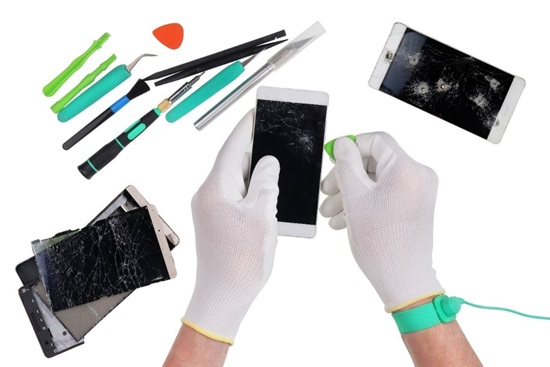
Â
Unfortunately, when wearing gloves to protect against abrasion and cut hazards, your hands are most likely rubbing against materials. And, as you've learned, rubbing against materials creates electrostatic charges. Some glove materials are not equipped for wearing in sensitive electronic areas. Even if you are properly grounded, touching an ESD-sensitive device or equipment can result in a harmful discharge.Â
To avoid ESD, the answer is to increase the contact resistance of the electrical path to slow and control the discharge speed. Wearing anti-static ESD safety gloves is an excellent way to accomplish this, as they are blended with conductive materials that help prevent them from building up static electricity. ESD gloves are ideal for electronic assembly work, handling microelectronics, PC and laptop repair, or assembly where electrostatic discharge may be a concern.
Overall benefits of wearing ESD-specific gloves include:
- Lessening the potential for static electricityÂ
- Helping prevent static shock to a user
- Protecting sensitive electronic products from harm
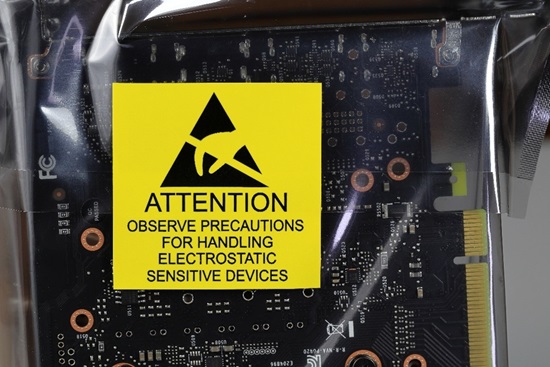
Anti-static gloves are an invaluable part of the ESD equation, as these gloves protect both the wearer and the materials being handled. However, it's important to remember that wearing these gloves doesn't negate wearing other gear established in an ESD Protected Area (EPA), such as a wrist strap system. Gloves must be combined with the other grounding devices covered above to successfully control electrostatic discharge. The primary purpose of wearing gloves is to increase protection for both devices and individuals, but they cannot be the only defense against ESD.
Â
MCR Safety ESD-Protective Gloves
Â
MCR Safety strives to utilize ANSI standards wherever possible, so users know they receive PPE with validated performance. ANSI SP15.1-2005 is the go-to standard for assessing ESD glove performance. Two test methods are utilized to pass this standard: ANSI/ESD STM11.11 tests the resistance of glove materials using surface resistance measurement, and ANSI/ESD S11.12 performs volume resistance measurement. Passing this standard is the benchmark for ESD glove performance. We encourage you to read the following document for more information about these test methods.Â
Â
Disposable
We know that not all customers require ANSI-tested products. Some are only looking for products that have shown characteristics of being ESD-friendly. We leave it up to users to decide what products are best for them. The gloves shown below are other general-purpose options used in ESD-sensitive operations.Â
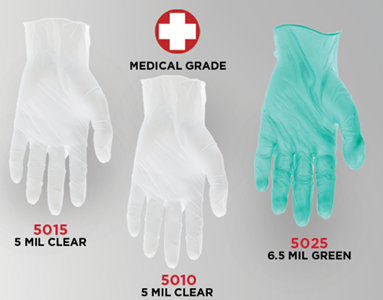
ESD Disposable Gloves -Â The 5015, 5010, and 5025Â are frequently used in ESD environments.
Â

The 8720 100% stretch nylon, low lint, is often worn in ESD environments.
Â
Â
Common Questions

Which tool can protect computer components from the effects of ESD?
- A wrist strap system connects a person to a known ground point. Numerous other ESD Protected Area (EPA) tools are highlighted above.
Â
Does using rubber gloves protect against ESD?
- Some rubber gloves can reduce the risk of electrostatic discharge if tested for ESD.
Â
Are nitrile gloves ESD safe?
- Yes, some nitrile gloves protect against ESD, but they are not the only defense for protecting against electrostatic discharge. Also, it's imperative to ensure the nitrile glove has been explicitly tested for ESD, as not all nitrile material is conductive.
Â
Do ESD gloves work alone?
- While ESD gloves are a good weapon in the battle against ESD, they are not the only line of defense. Additional equipment is required to ensure one is grounded.
Â
Where do I purchase ESD gloves?
- Our Buy & Try Sampling program expedites product evaluations by providing consumers with MCR Safety products, including ESD gloves. Authorized MCR Safety distributors will then handle any future requests for orders.
Â
Safeguarding People and Equipment
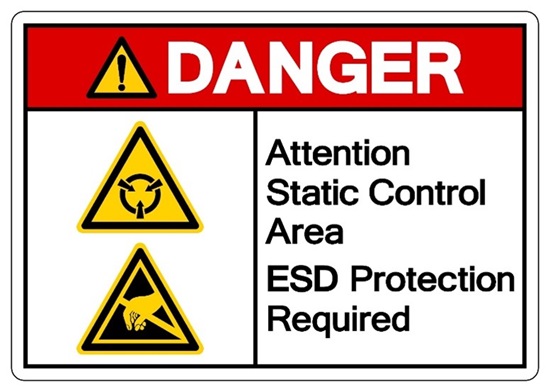
If you frequently handle electronic devices, ESD-safe gloves provide increased protection to keep you and the device safe when working in ESD-prone areas. We hope the above has shed some light on this ever-increasing concern across numerous industries and that you allow MCR Safety the opportunity to help protect you from electrostatic discharge!
Â
Click the below image to leave us comments, questions, or any concerns.
Â
 Â
Â
REQUEST A DISTRIBUTOR QUOTEÂ
TRY IT OUT
Â
For over 45 years, MCR Safety has proven to be a world leader in gloves, glasses, and garments. Whether you're handling circuit boards, assembling a PC, or working at a construction site, we provide solutions to workplace hazards. It's all part of our commitment to protect people.Â
Â

No matter your industry, we have the personal protective equipment you need.
Â
Â

Â
Learn more about MCR Safety by checking out our most recent video. For more information, browse our website, request a catalog, find a distributor, or give us a call at 800-955-6887.
Â
Â
Â
High Pressure Cleaning Equipment
High Pressure Cleaning Equipment,Fully Automatic Computer Car Wash,Reciprocating Car Wash,Self-Service Car Wash Machine
Xuzhou kushuilong Machinery Equipment Co., Ltd , https://www.kslcarwash.com